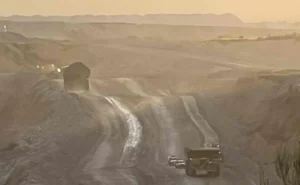The main grid in Western Australia – the biggest isolated grid in the world – has smashed a seven-year old electricity demand record during an unprecedented heatwave that hit the state even before summer has officially started.
The Australian Energy Market Operator said over the weekend that the “unprecedented” November heatwave, which featured temperatures above 40°C in Perth, several bushfires and destroyed homes, drove high demand and set a new electricity demand record of 4,041 MW during the peak on Thursday evening.
That record beat the previous peak of 4,006 MW on the South West Interconnected System (SWIS) that was set in the middle of summer in February, 2016.
The W.A. grid is particularly interesting because it is regarded as the largest standalone grid in the world, with no connections to other networks.
Its remaining fleet of ageing coal fired generators are expected to close by the end of the decade, if they manage to last that long, and the state has embarked on a massive and accelerated campaign to boost wind, solar and storage to replace that lost capacity.
The state, however, is being driven to do more, and quicker, because industry has told it that they need to source cheap and clean power to make their products – from mines, refineries and manufacturing – globally competitive and with low emissions.
The W.A. government recently completed an updated demand forecast that predicted the need for more than 50 GW of new wind and solar capacity in coming decades to service that demand, which will also be driven by green hydrogen production, electric vehicles, and electrification of households and businesses.
W.A.’s most pressing problems in recent years has been the growth of rooftop solar, to such an extent that it is creating a massive solar “duck” that is eating into grid demand in the middle of the day.
AEMO has recently been commissioning a series of huge batteries to soak up that rooftop solar in the middle of the day and switch it over to the evening peak.
The spring heatwave, however, is a reminder that with global warming intensifying heatwaves and demand peaks also remain a risk, and it hints at the broader challenges that will be faced across Australia’s main grid this summer, where coal fired generators are seen as the biggest weak point.
AEMO reportedly ordered every available generation source online to cope with the heatwave, although much of its wind capacity north of Perth was curtailed by a lack of transmission capacity, something the state is trying to address with planned new transmission lines.
“We are in for a long, hot summer, that can’t be avoided, but it can be prepared for,” federal energy minister Chris Bowen told journalists after the meeting of federal and state energy ministers in Perth on Friday that endorsed the expanded Capacity Investment Scheme,.
“The states and the Commonwealth together with AEMO are working very, very closely together to ensure we are best prepared for that long, hot summer, something which Bill (WA energy minister Bill Johnston) and AEMO and the State Government has been dealing with just for the last 48 hours, the biggest load in Western Australia’s history yesterday on the SWIS.
“The biggest threat to reliability in our energy system is unexpected outages from coal‑fired power stations, as the coal‑fired power fleet ages.
“We need to get more energy on more quickly to improve the reliability of Australian’s energy grid, and that’s exactly what we’re all committed to doing.”
Johnston also pointed to the problems with coal fired generation.
“What won’t play a significant role in the future is coal, and our coal‑fired power stations are becoming increasingly economically unviable, and they’re becoming increasingly mechanically unviable, and causing trouble in managing the system,” he said.
“In June of this year we had three coal‑fired power stations break down at the same time, and so even though the amount of electricity needed was not very high, because of the unreliability of the coal plant, it was a challenge to manage the system.”
NOTE: Further details on the output and the market share in last Thursday’s peak are not available because the AEMO data dashboard has not been updated since a switch to the design of its electricity market just over a month ago.










